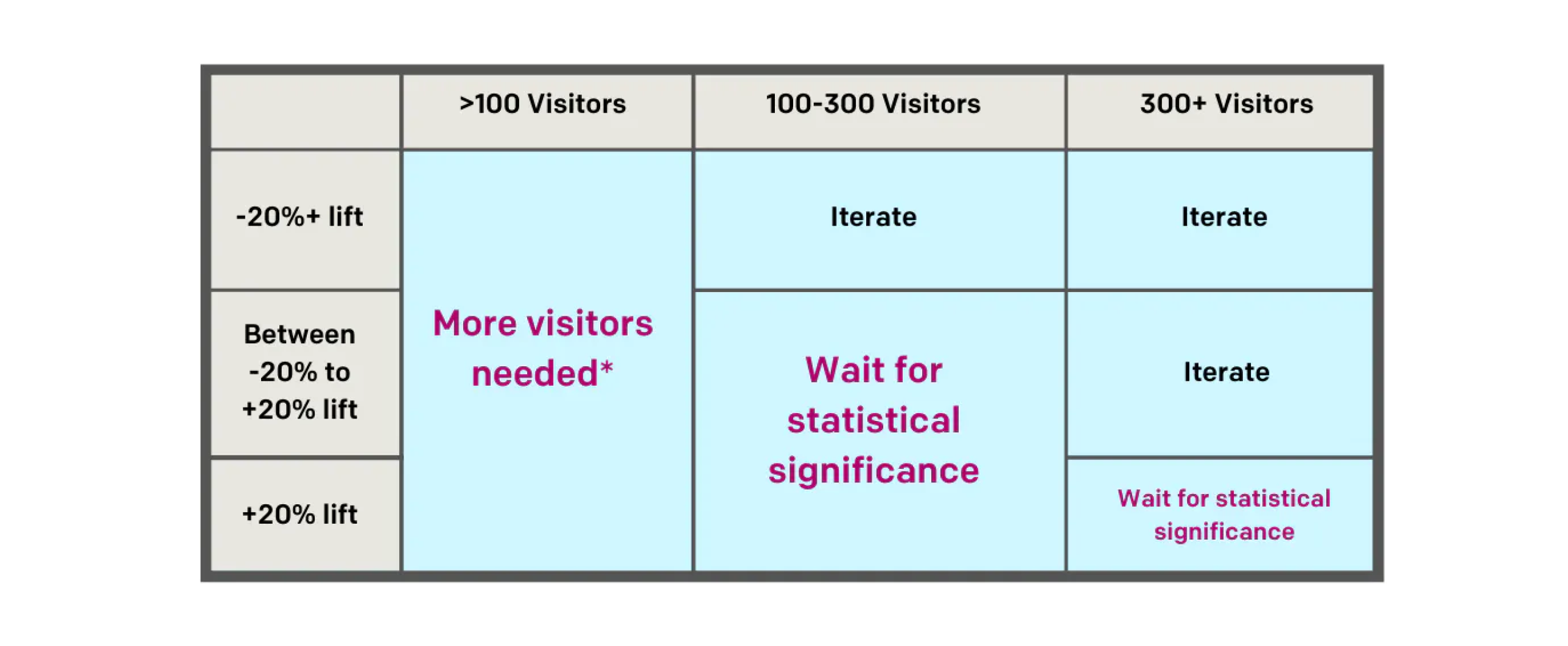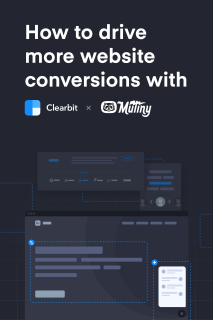Chapter 3
5 minutes
Putting website personalization into practice
You’ve got all the pieces in place, now it’s off to the races. Here’s how you implement a website personalization strategy.
Step 1: Identify visiting companies and build your audiences
The first step in implementing a website personalization strategy is to identify companies visiting your site and define your audiences (as part of the target audience prep work you did in chapter 2).
To identify anonymous companies visiting your site you’ll need an IP intelligence provider. Clearbit Reveal, and other IP intelligence providers, use proprietary mapping techniques and algorithms to match IPs to companies.
You’ll also need access to accurate and fresh data to activate your ICP. Clearbit has over 100 business data attributes like company size, industry, and funding raised. You can use these Clearbit attributes in the Mutiny platform to build audiences for your targeted website personalization efforts. As discussed in chapter 1, you’ll want to start with your ICP as a base and then layer in additional criteria to build sub-segments.
When building your audiences, make sure they support the goals you set in chapter 1. For example, Charlotte Clutson, Performance Marketing Manager at Clearbit, wanted to increase enterprise conversions to feed the sales team with more qualified leads. She had a hypothesis that personalizing the homepage copy for enterprise companies would increase conversion rates.
To get started, she first built an audience in Clearbit to better understand the volume of monthly traffic from enterprise companies and what types of companies were visiting the website.
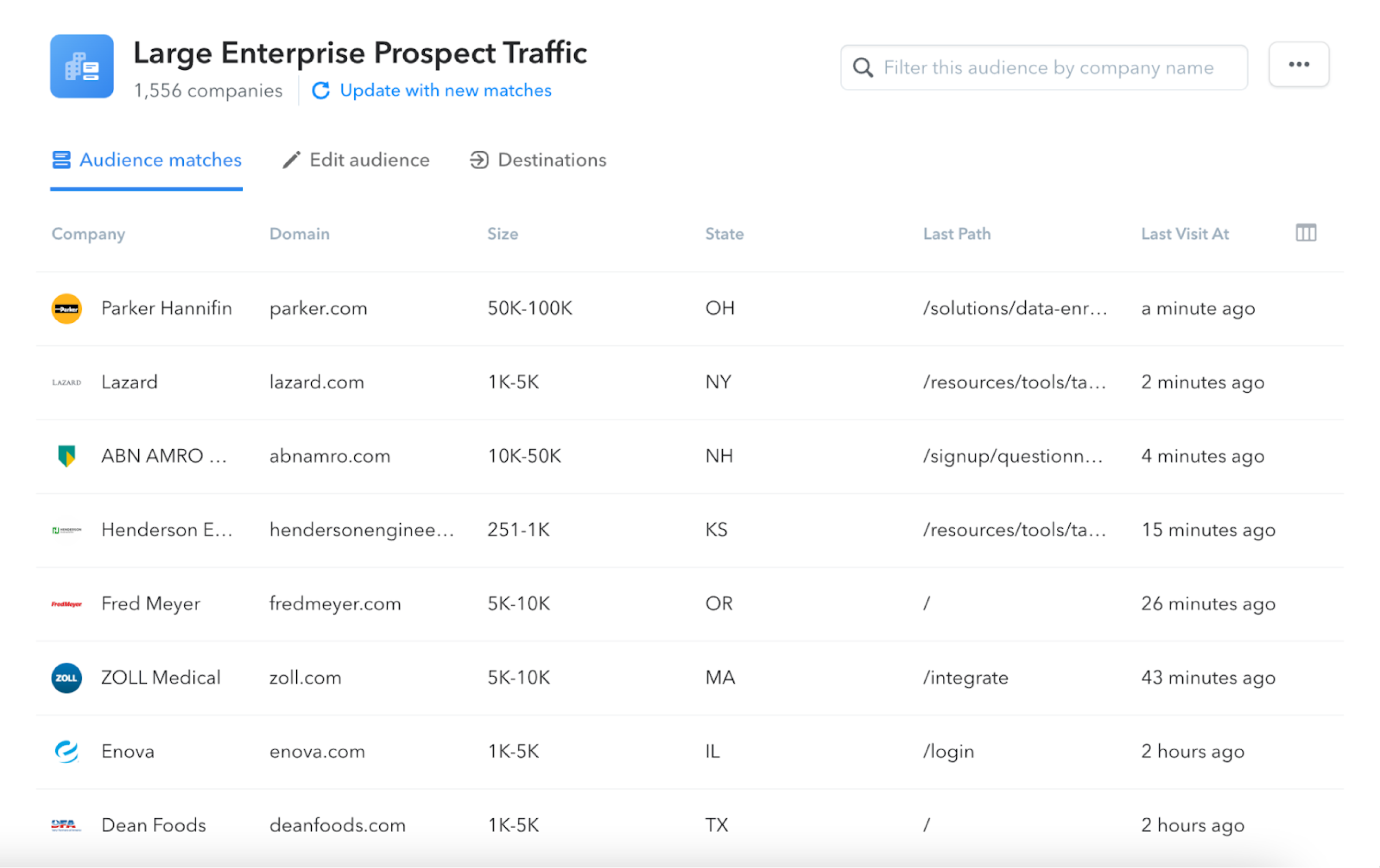
Then, Charlotte built an audience in the Mutiny platform using Clearbit data, targeting companies with 1,000 to 100,000 employees in B2B SaaS. She also set exclusion parameters, to exclude current customers and accounts in industries that didn’t fall within Clearbit’s ICP like consulting or professional services.
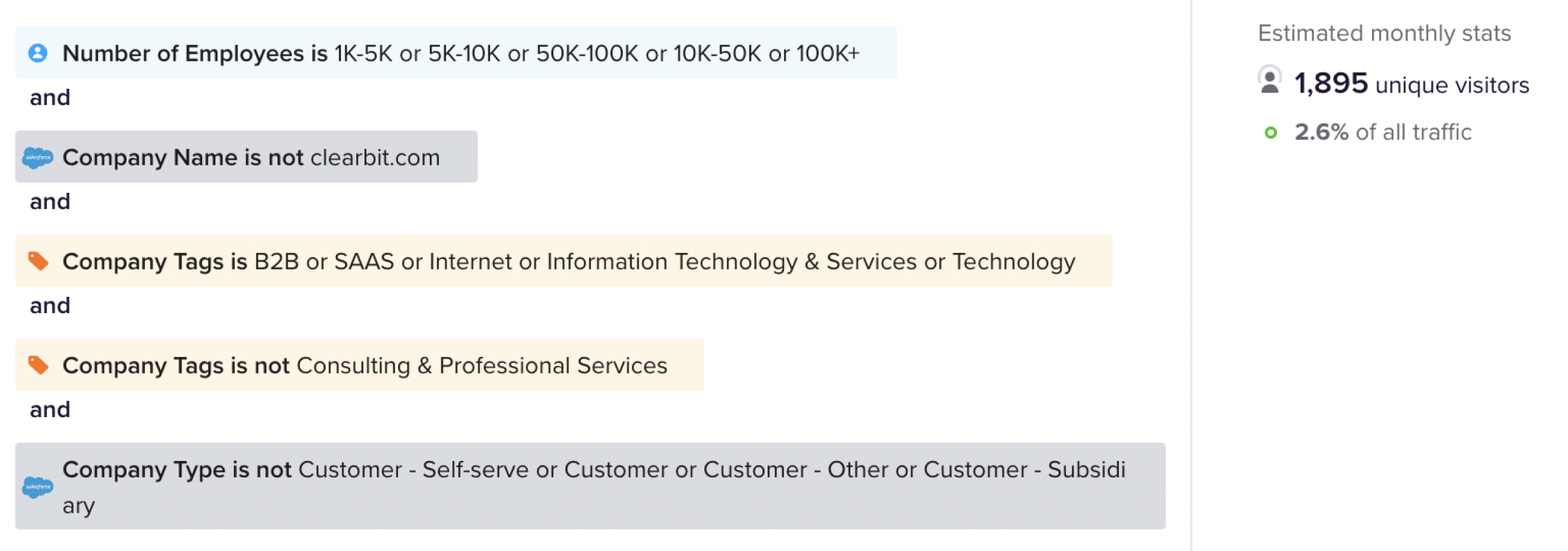
Step 2: Change the website experience
With your audiences in place, it’s time to build a custom website experience. Going back to the example with Charlotte, she had built her audience and was ready to personalize the homepage.
In the Mutiny platform, Charlotte updated the H1 to focus on enterprise decision-makers' top priority: revenue. She also changed the CTA to a demo offer. And, she customized the text above the customer logos. Here’s what the control and test experiences looked like.
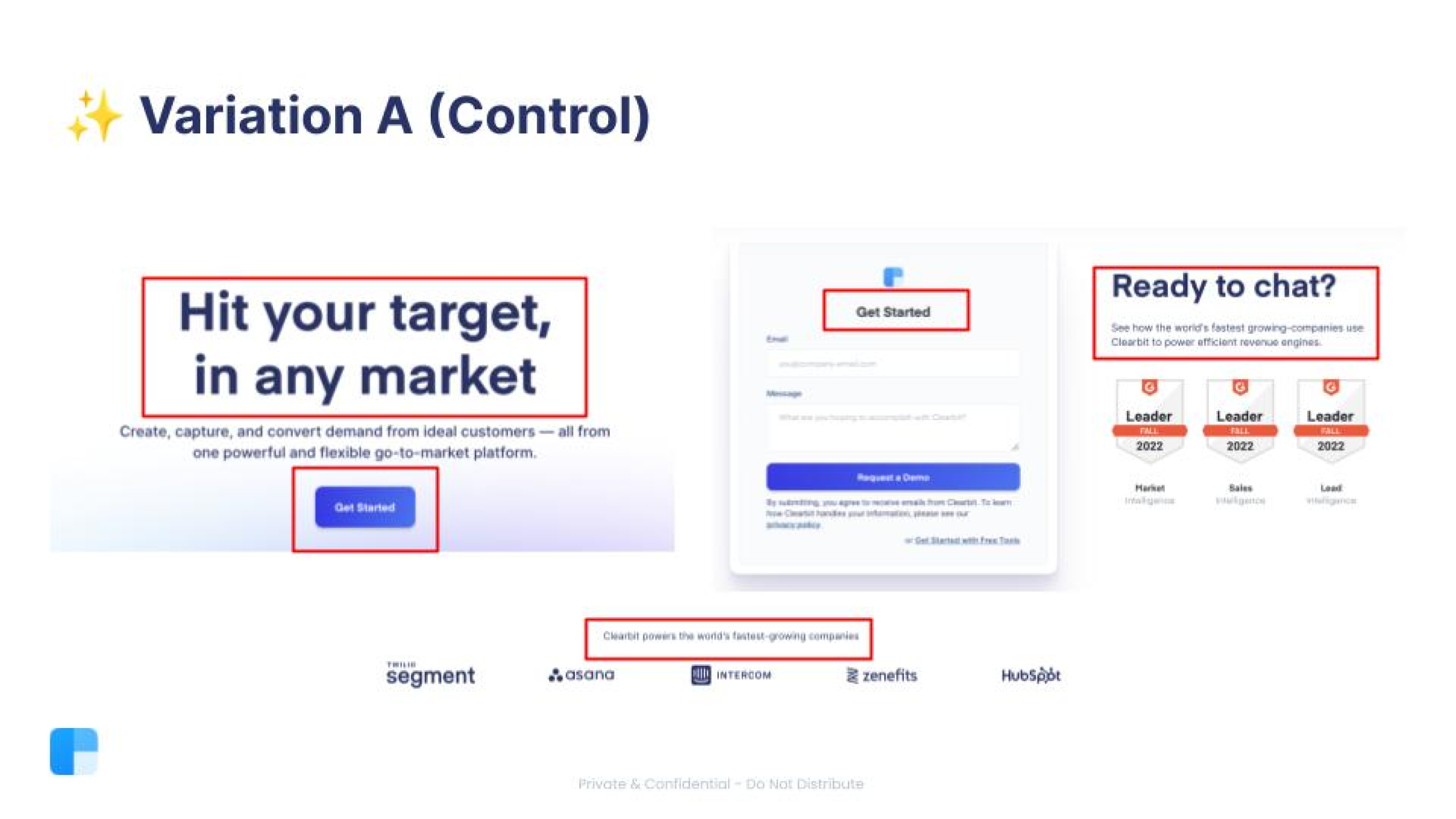
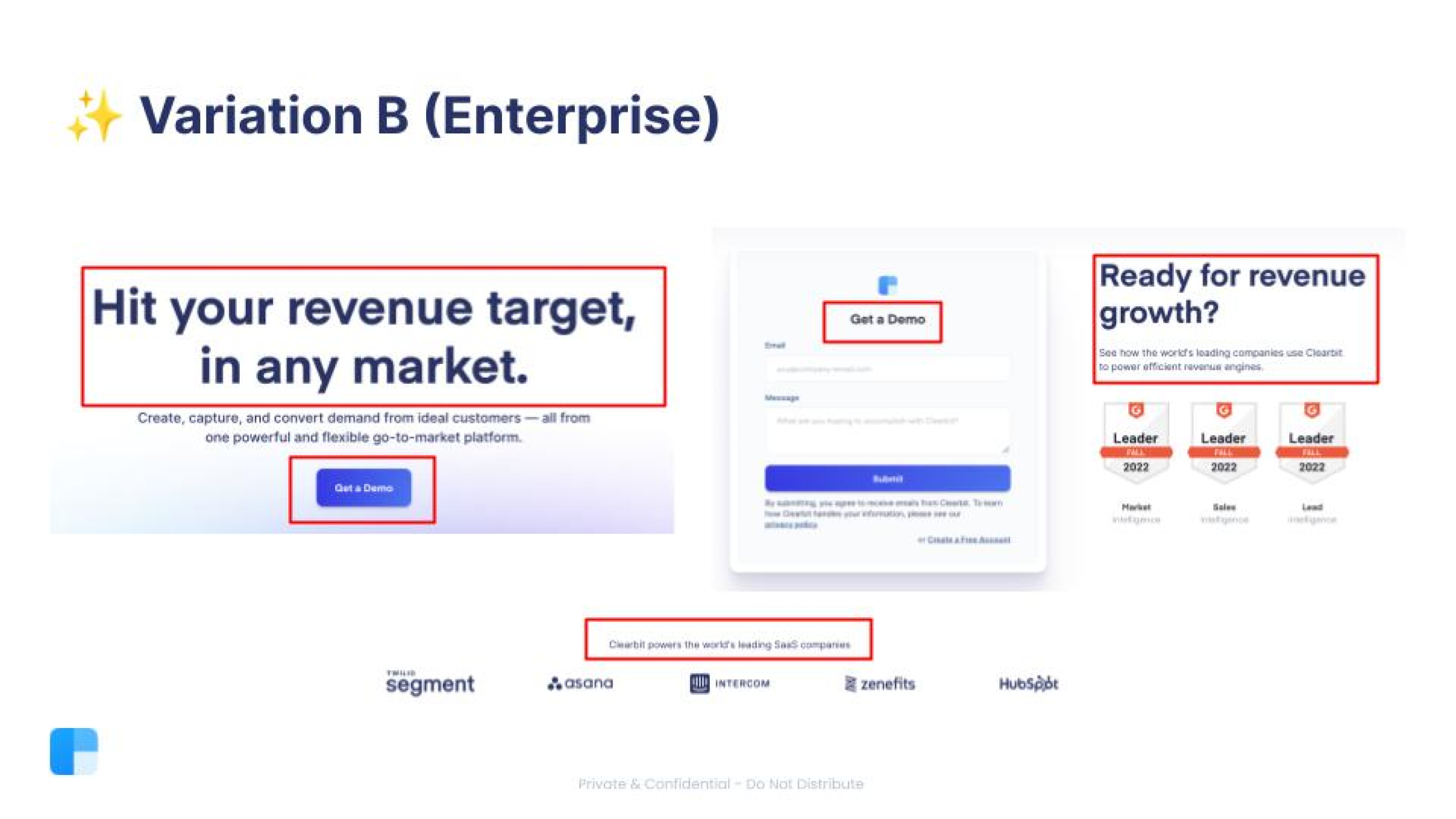
We understand that it can be overwhelming figuring out what website changes to make, so we recommend looking at personalization experiments in three buckets: quick wins, 1:few, and 1:1.
Here’s a quick run-through and some examples.
Quick wins
Quick wins are easy ways to deploy your first personalization experiment. Some quick tests include changing website elements like headlines or customer logos based on key segments.
For example, if healthcare tech companies with 50-250 employees are a key sub-segment within your ICP, you can use a website personalization tool like Mutiny to display relevant customer logos or change the headline to speak to their challenges.
Here’s an example of how Amplitude changes their homepage based on whether the visiting company is in the B2B or B2C space.
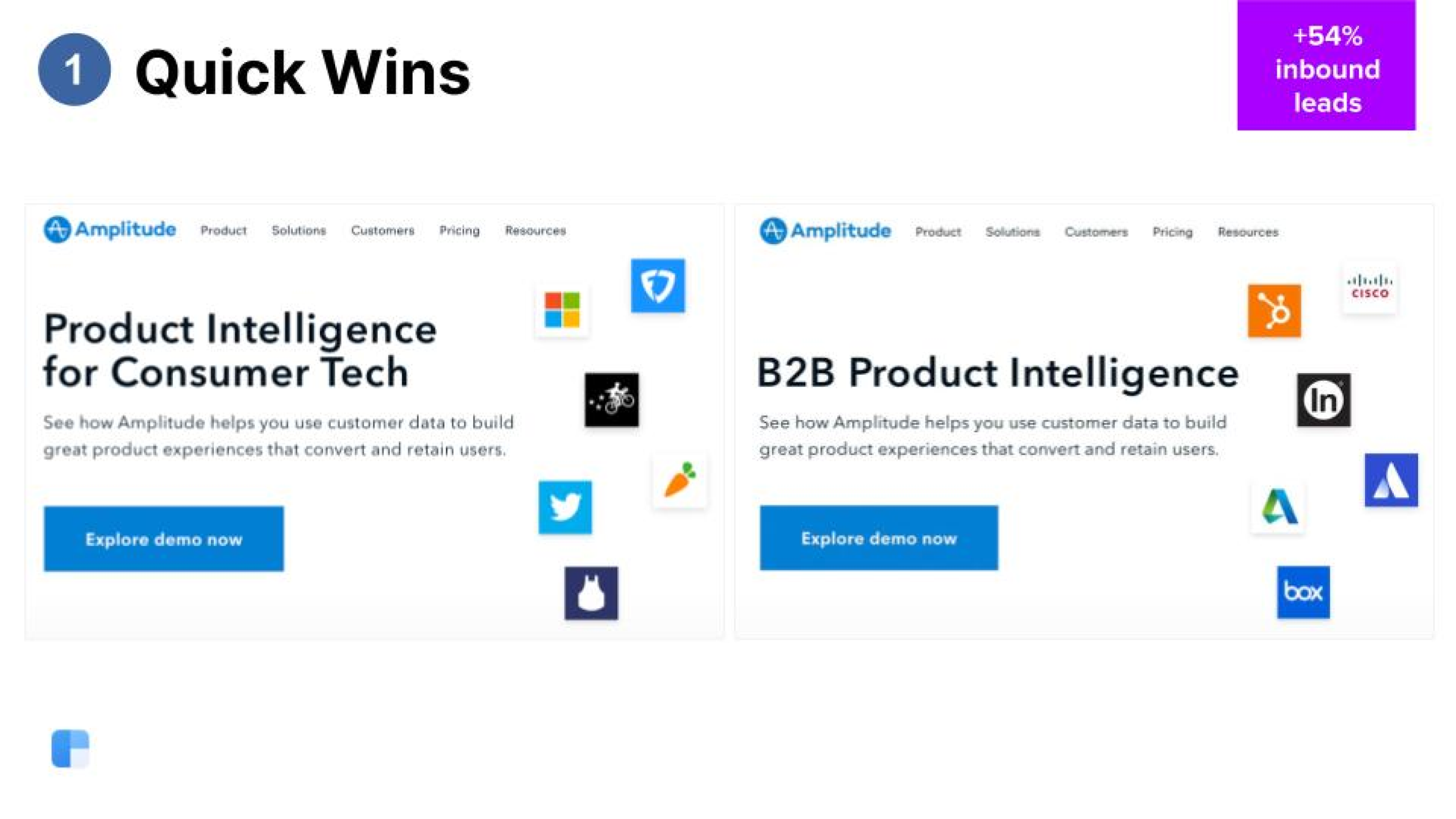
1:few
Building 1:few personalization experiences brings you a level deeper.
“This is where you’ll do a little bit more homework. You may want to do your research on the industry,” says Ryan Narod, Head of Marketing at Mutiny.
For example, Brex tailors their headline, case studies, and content based on industry, which has increased conversion rates by 29%.
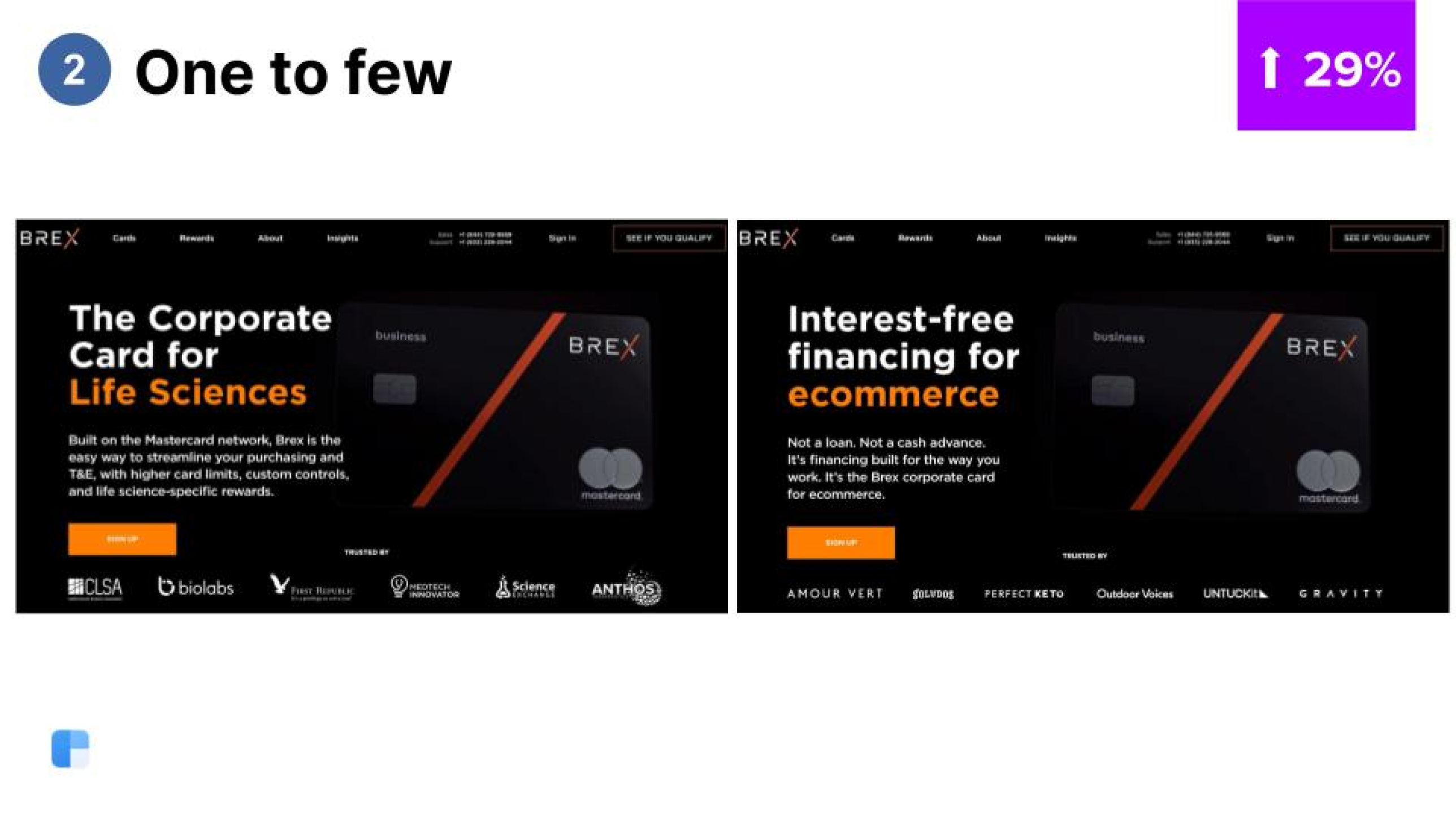
1:1
1:1 personalization is incredibly impactful but requires the highest degree of effort. As Ryan Narod, Head of Marketing at Mutiny says, “This is what personalization experts would consider the holy grail.”
With 1:1 personalization, you are customizing your website to speak directly to one company, say Clearbit, for example. One way to do this is by specifically referencing the visiting company name in a relevant and thought-provoking way (not just saying “Hi Clearbit!”).
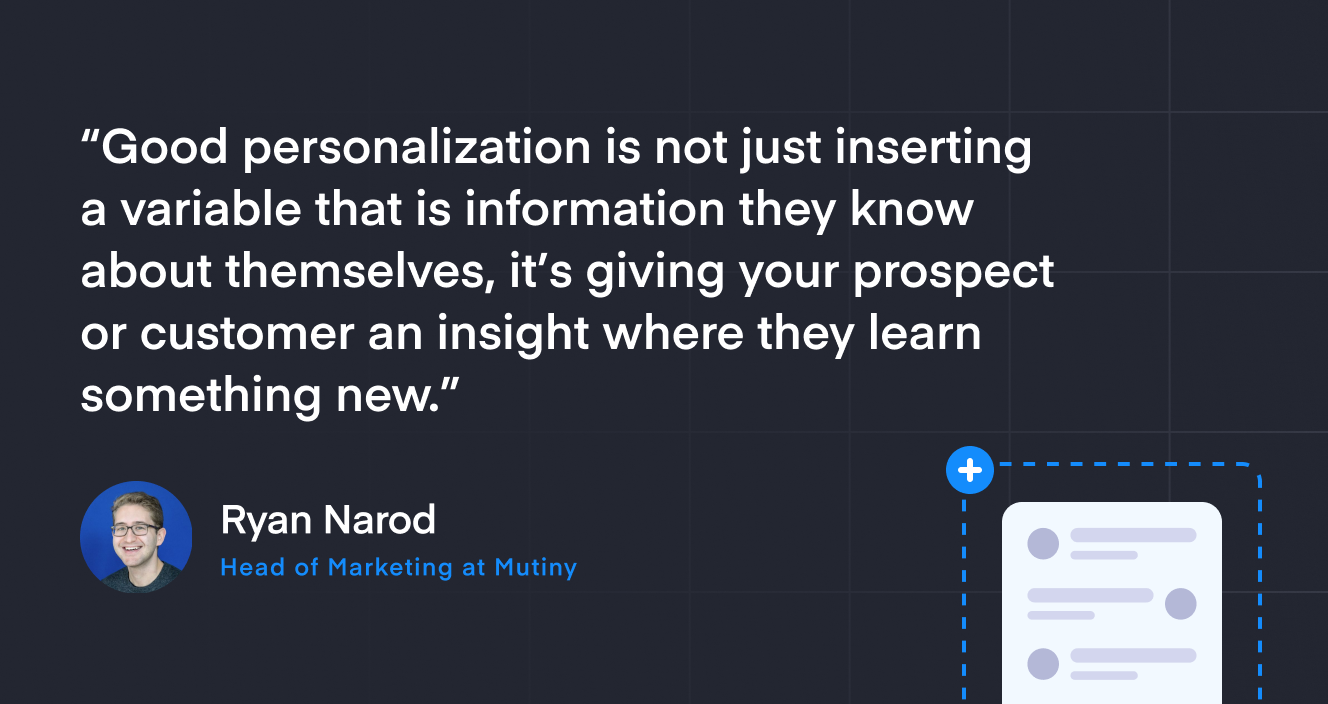
In the example below, Gremlin uses their data to share custom insights with companies in their target audience.
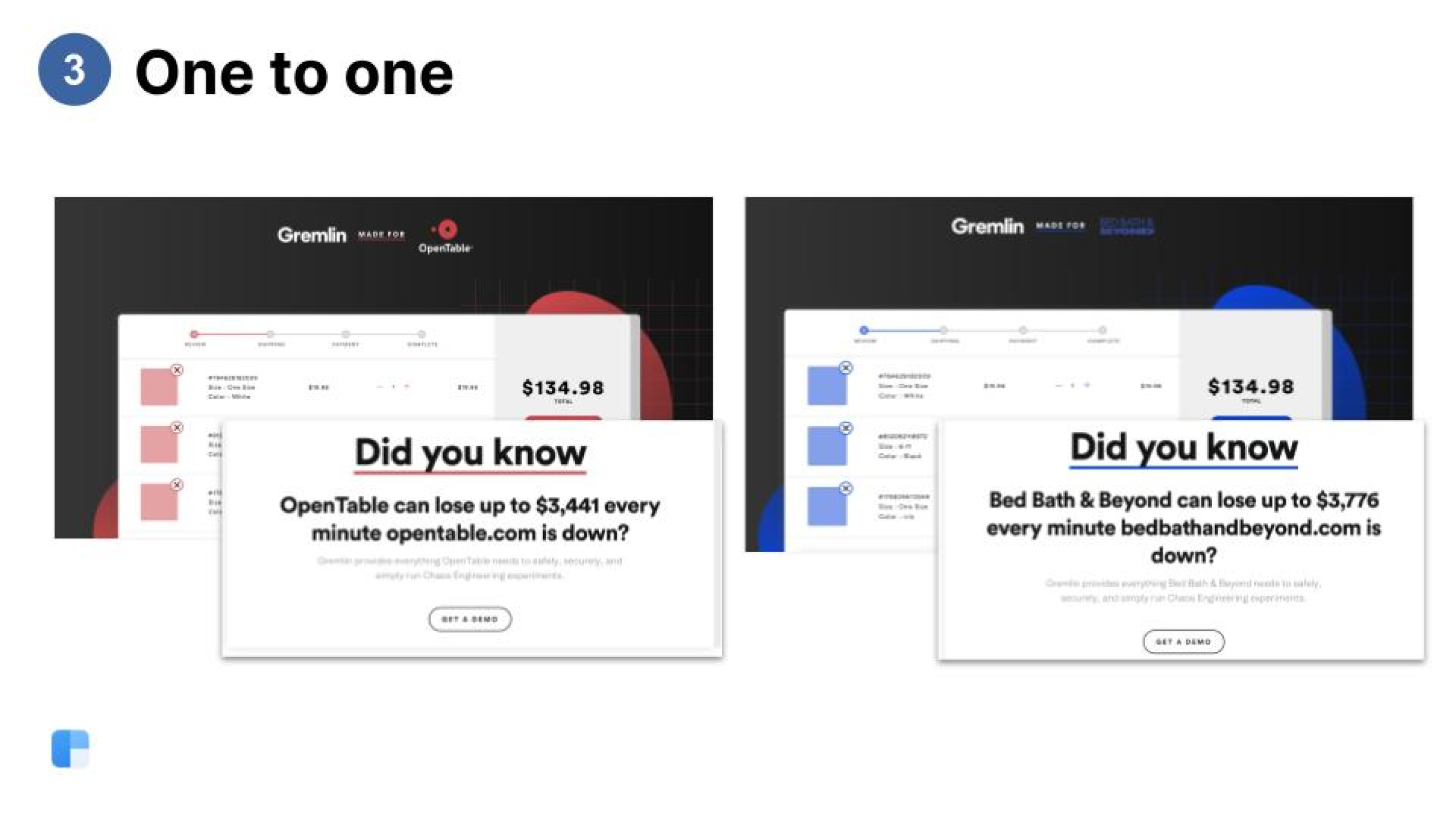
Step 3: Measure and iterate
Personalization changes to your website have the most tangible impact on page engagement metrics (like visitor frequency or time spent on page) and conversions. While you can track additional down funnel metrics, there are often other variables involved.
Once you’ve decided on your success criteria, you’ll want to Identify the lift of the new experience over the standard experience. For example, if you’re targeting healthcare companies and want to drive demo requests, send 50% of your audience to the personalized experience and 50% to the standard webpage experience and measure (with statistical significance) if there is a lift in demo conversions from the personalized experience.
Revisiting Charlotte’s personalization test we discussed above, using Mutiny she was able to easily understand her results and generated a 126% increase in demo requests from the enterprise audience.
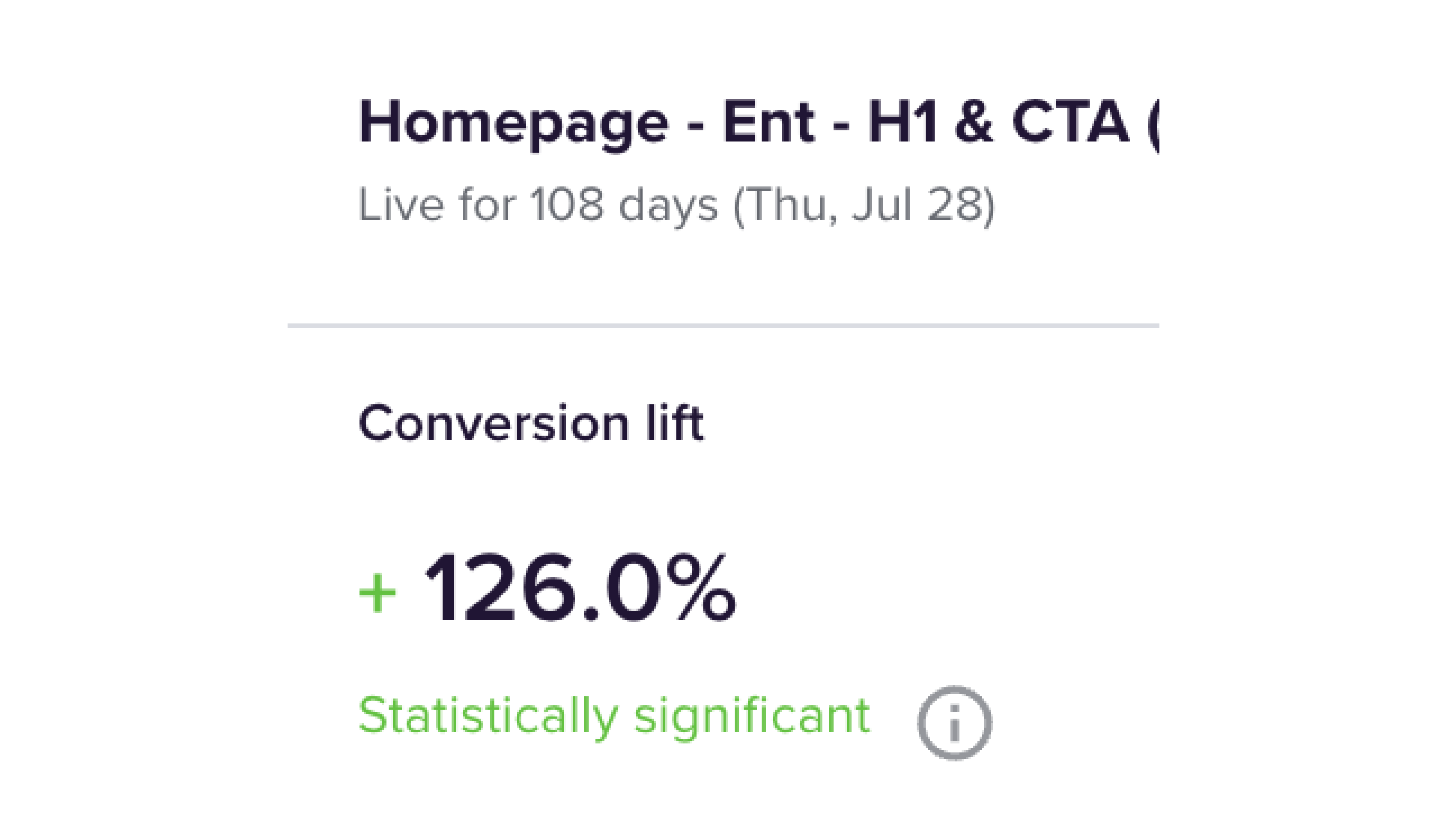
Website personalization isn’t a set-it-and-forget-it strategy. Make sure to regularly track success so you can make changes that will drive the best results.
If you have a high enough volume of visitors and are seeing a significant negative lift, it may make sense to iterate on the test, even if it has not reached statistical significance yet. If you have a high enough volume of visitors and are seeing little to no lift, it may also make sense to think about how you can make your personalization experience stand out more. If your test has been running for more than a month and has fewer than 100 visitors, you will likely need to expand your audience (revisit the step above) to understand if the experiment is working.
Here’s a framework the Mutiny team created to help you identify when to make changes to your personalization experience based on the conversion lift and the number of website visitors.
